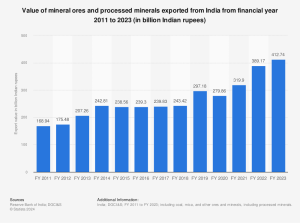As a natural resource and environmental economist, Dr. James Ji emphasizes the importance of using economics to understand and address the societal impacts of resource use and environmental change. For example, how does mining minerals in countries like India impact local economies and social change for women in those communities?
His recent research with collaborators from Université de Sherbrooke, Brandeis University, and Rutgers University was recognized by the Asian Pacific Economic Cooperation (APEC) as runner-up for the 2024 Healthy Women, Healthy Economies prize. APEC is a regional economic forum with over 20 member countries, including the United States. The Healthy Women, Healthy Economies initiative was created with the goal of raising awareness and promoting practices to enhance women’s economic participation by improving women’s health.
Annually, the initiative recognizes research that enables policymakers, business leaders, and others to identify and implement measures to improve women’s health in APEC economies so women can join and rise in the workforce.
“This award is especially meaningful because it underscores the importance of our work,” Ji said. “My colleagues and I highlighted how local mining, especially when paired with policies that promote investment of mining profits into women-centered initiatives, can help empower women to reject regressive cultural norms.”
Mining Industry in India
Mining is a major industry in India, with over 80 different minerals produced for a total of one billion tons annually. While there are environmental concerns, such as deforestation associated with industry, it provides a great boon to the local economy, with an average daily employment of over half a million workers.
However, female employment shares in mining are much lower. Data from the annual Government of India Ministry of Labor and Employment publication of the Statistics of Mines in India indicate that from 2010 to 2015, only 6 percent of all workers were women across all minerals/metals.

The Mining Industry’s Impact on Women’s Agency
While the mining industry has long been considered an enclave for women, new research suggests suggesting that mining can improve local employment, living standards, and women’s agency, challenging the traditional view of the “resource curse”. Guimbeau et al. (2023), published in World Development, a leading interdisciplinary journal on development issues, weighs in on the debate with new evidence on mining and women’s agency in India.
To determine the relationship between the mining industry and women’s agency in India’s communities, the researchers combined several data sources. This included the locations and types of active mines, mining employment, and production values with individual and household-level data from India’s 2015-2016 Demographic and Health Survey (DHS).
By using this information, they found that women living near mines with a higher percentage of female labor and effective profit-sharing mechanisms were less accepting of domestic violence. They also tended to have improved access to healthcare services compared to areas without mining operations.
Implications for Impactful Policymaking
As described in this paper, the results provide a strong, science-based context for APEC member economies to consider in their policymaking, especially those that engage in mining, such as India, Chile, Indonesia, Malaysia, and Peru.
“While our research is based in India, many other countries in the region have a significant presence of mineral extraction operations” Ji said. “Our work has broader implications for these countries as well in terms of crafting effective policies to align the mining industries with efforts to improve local communities’ welfare, health, and woman’s agency.”
The full article, “Mining and women’s agency: Evidence on acceptance of domestic violence and shared decision-making in India” is available now in World Development at https://www.sciencedirect.com/science/article/pii/S0305750X22003254.
 1
1
